Nissan Juke vs SEAT Leon – Differences & prices compared
Two cars, one duel: Nissan Juke meets SEAT Leon.
Which one wins in performance, efficiency and value for money? Find out now!
Costs and Efficiency:
Price and efficiency are often the first things buyers look at. Here it becomes clear which model has the long-term edge – whether at the pump, the plug, or in purchase price.
Nissan Juke has a slightly advantage in terms of price – it starts at 21400 £, while the SEAT Leon costs 24500 £. That’s a price difference of around 3069 £.
Fuel consumption also shows a difference: SEAT Leon manages with 0.30 L and is therefore convincingly more efficient than the Nissan Juke with 4.70 L. The difference is about 4.40 L per 100 km.
Engine and Performance:
Under the bonnet, it becomes clear which model is tuned for sportiness and which one takes the lead when you hit the accelerator.
When it comes to engine power, the SEAT Leon has a significantly edge – offering 272 HP compared to 143 HP. That’s roughly 129 HP more horsepower.
In acceleration from 0 to 100 km/h, the SEAT Leon is clearly perceptible quicker – completing the sprint in 7.70 s, while the Nissan Juke takes 10.10 s. That’s about 2.40 s faster.
In terms of top speed, the SEAT Leon performs to a small extent better – reaching 220 km/h, while the Nissan Juke tops out at 180 km/h. The difference is around 40 km/h.
There’s also a difference in torque: SEAT Leon pulls significantly stronger with 360 Nm compared to 200 Nm. That’s about 160 Nm difference.
Space and Everyday Use:
Cabin size, boot volume and payload all play a role in everyday practicality. Here, comfort and flexibility make the difference.
Both vehicles offer seating for 5 people.
In curb weight, Nissan Juke is hardly perceptible lighter – 1274 kg compared to 1344 kg. The difference is around 70 kg.
In terms of boot space, the Nissan Juke offers slight more room – 422 L compared to 380 L. That’s a difference of about 42 L.
In maximum load capacity, the Nissan Juke performs barely noticeable better – up to 1305 L, which is about 4 L more than the SEAT Leon.
When it comes to payload, SEAT Leon to a small extent takes the win – 521 kg compared to 427 kg. That’s a difference of about 94 kg.
Who comes out on top?
Overall, the SEAT Leon shows itself to be dominates this comparison and secures the title of DriveDuel Champion.
It convinces with the more balanced overall package and proves to be the more versatile choice for everyday use.
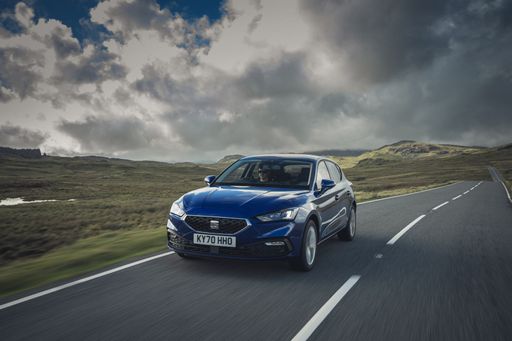
SEAT Leon
Nissan Juke
The Nissan Juke stands out with its distinctive design and bold styling, making it a popular choice for those seeking something different on the road. Its interior cleverly combines modern technology with comfort, offering an enjoyable driving experience for both the driver and passengers. Despite its compact size, the Juke provides a surprising amount of space and versatility, making it suitable for urban adventures and weekend getaways alike.
details @ germany.nissannews.com
@ germany.nissannews.com
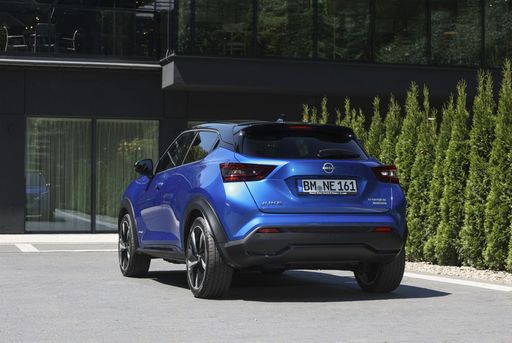 @ germany.nissannews.com
@ germany.nissannews.com
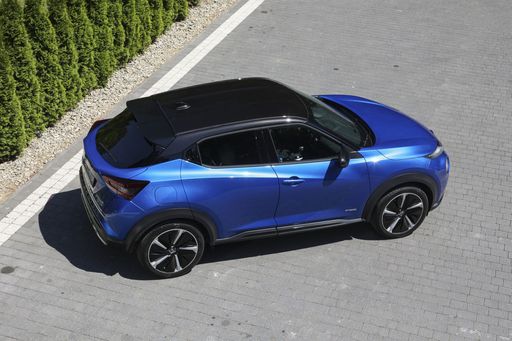 @ germany.nissannews.com
@ germany.nissannews.com
 @ germany.nissannews.com
@ germany.nissannews.com
SEAT Leon
The SEAT Leon impresses with its dynamic design and sporty edge, making it a standout choice in its class. Its interior is characterised by a modern, driver-focused cockpit that combines functionality with an emphasis on comfort. The car delivers a responsive driving experience, thanks to its advanced engineering and agile handling capabilities.
details @ seatmedia
@ seatmedia
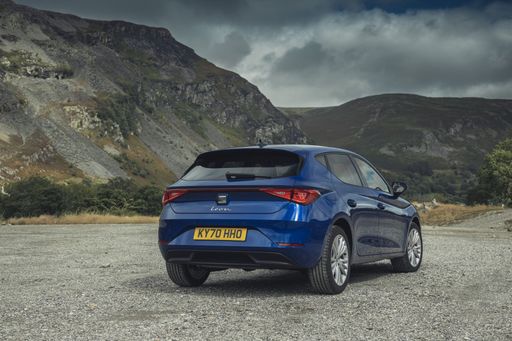 @ seatmedia
@ seatmedia
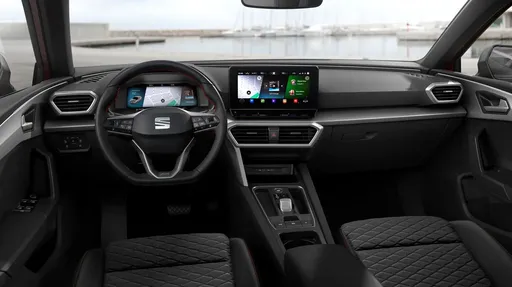 @ seatmedia
@ seatmedia
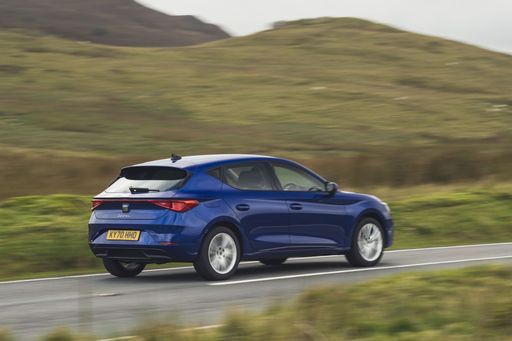 @ seatmedia
@ seatmedia

|

|
|
|
|
Costs and Consumption |
|
|---|---|
|
Price
21400 - 30100 £
|
Price
24500 - 36400 £
|
|
Consumption L/100km
4.7 - 6 L
|
Consumption L/100km
0.3 - 5.7 L
|
|
Consumption kWh/100km
-
|
Consumption kWh/100km
-
|
|
Electric Range
-
|
Electric Range
133 - 134 km
|
|
Battery Capacity
0.60 kWh
|
Battery Capacity
19.70 kWh
|
|
co2
107 - 136 g/km
|
co2
7 - 129 g/km
|
|
Fuel tank capacity
46 L
|
Fuel tank capacity
40 - 45 L
|
Dimensions and Body |
|
|---|---|
|
Body Type
SUV
|
Body Type
Hatchback
|
|
Seats
5
|
Seats
5
|
|
Doors
5
|
Doors
5
|
|
Curb weight
1274 - 1405 kg
|
Curb weight
1344 - 1670 kg
|
|
Trunk capacity
354 - 422 L
|
Trunk capacity
270 - 380 L
|
|
Length
4210 mm
|
Length
4368 mm
|
|
Width
1800 mm
|
Width
1799 mm
|
|
Height
1593 mm
|
Height
1442 - 1460 mm
|
|
Max trunk capacity
1237 - 1305 L
|
Max trunk capacity
1187 - 1301 L
|
|
Payload
405 - 427 kg
|
Payload
460 - 521 kg
|
Engine and Performance |
|
|---|---|
|
Engine Type
Petrol, Full Hybrid
|
Engine Type
Petrol, Petrol MHEV, Diesel, Plugin Hybrid
|
|
Transmission
Manuel, Automatic
|
Transmission
Manuel, Automatic
|
|
Transmission Detail
Manual Gearbox, Dual-Clutch Automatic, Automatic Gearbox
|
Transmission Detail
Manual Gearbox, Dual-Clutch Automatic
|
|
Drive Type
Front-Wheel Drive
|
Drive Type
Front-Wheel Drive
|
|
Power HP
114 - 143 HP
|
Power HP
110 - 272 HP
|
|
Acceleration 0-100km/h
10.1 - 11.8 s
|
Acceleration 0-100km/h
7.7 - 10.5 s
|
|
Max Speed
166 - 180 km/h
|
Max Speed
197 - 220 km/h
|
|
Torque
200 Nm
|
Torque
220 - 360 Nm
|
|
Number of Cylinders
3 - 4
|
Number of Cylinders
4
|
|
Power kW
84 - 105 kW
|
Power kW
85 - 200 kW
|
|
Engine capacity
999 - 1598 cm3
|
Engine capacity
1498 - 1968 cm3
|
General |
|
|---|---|
|
Model Year
2024
|
Model Year
2024 - 2025
|
|
CO2 Efficiency Class
D, E, C
|
CO2 Efficiency Class
D, B
|
|
Brand
Nissan
|
Brand
SEAT
|
What drive types are available for the Nissan Juke?
Available configurations include Front-Wheel Drive.
The prices and data displayed are estimates based on German list prices and may vary by country. This information is not legally binding.
